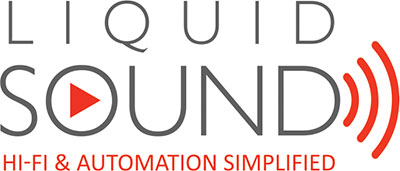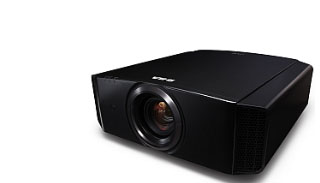JVC DLA-X35B Projector
This D-ILA front projector achieves 1,300-lumen brightness and 50,000:1 native contrast ratio. Such brightness and high native contrast as well as cinema-like picture quality are realized with the adoption of optical engine with JVC original D-ILA devices and wire-grid with improved performance.
In addition to such remarkable picture quality, the projector delivers exceptional 3D viewing with 2D-3D conversion and packed with 3D adjustment functions. Other innovative features include 5-mode Lens Memory function, 16-step Aperture, Pixel Adjust (1 pixel increment), 2x Motorized Zoom lens, 3 Screen Adjustment modes, Clear Motion Drive, and a new Environmental Setting that automatically adjusts the picture to best match the environment.
Features
JVC’s D-ILA DLA-X35B Projector is a branded version of LCoS (liquid crystal on silicon) three-chip projection tech. Sony also uses an LCoS variant, which it calls SXRD. Unlike Sony, JVC doesn’t include an automatic iris option on its projectors, and that’s spun as a point of pride; its claimed 50,000:1 contrast ratio is “native.” We don’t measure contrast ratio at CNET, but we can confirm that JVC’s claims amount to some pretty spectacular images.
The X35 is JVC’s company’s least-expensive D-ILA projector. The step-up DLA-X55R adds the company’s “e-Shift” faux 4K technology and more advanced color controls. The higher-end DLA-X75R and DLA-X95R boast higher contrast ratios, analog PC inputs, motorized lens covers, and THX and ISF certification.
JVC’s DLA-X35 doles out huge, stunning projection images characterized by deep black levels and highly accurate color; excellent value for this level of image quality; extensive picture adjustments and setup options, including power zoom, focus, and lens shift; no-nonsense minimalist design; optional 3D emitter compatible with cheaper third-party glasses.
JVC might not be a big name in TVs or home video anymore, but its home-theater projectors are still videophile favorites. They feature the company’s own D-ILA technology, capable of delivering jaw-dropping black levels — and hence overall picture quality — that trounces cheaper LCD and DLP projectors.
The DLA-X35 is the company’s most affordable example ($3,500 list), and even if you ignore screen size, its picture quality also trounces all but the best conventional TVs. Like all good projectors it requires a dark room and a decent screen, but provided those amenities, it’s easy to imagine why someone would prefer watching this image over that of any standard-size flat panel, let alone a jumbo LCD .
If you’re lucky enough to consider buying a projector like this, you may also have your eye on its direct competitor, Sony’s VPL-HW50ES . I’ll cut to the chase: there’s no picture quality difference between the two that makes me prefer one over the other. They’re both great, and both scored the same in our picture quality ratings.
The main difference between the two is in features, particularly included accessories. Sony throws in an extra lamp as well as two pair of 3D glasses. JVC provides no extra lamp and requires you to buy an emitter and glasses separately for 3D.
On the other hand the JVC costs hundreds less, especially when you factor in retailer discounts unavailable on the price-protected Sony. So, despite the Sony’s additional extras, I consider the JVC the better value. If you’re in the market for a videophile-grade projector yet still have a budget, the JVC DLA-X35 is tough to beat.
| JVC DLA-X35B Projector Key features | ||||
| Projection Technology | D-ILA (LCoS) | Native resolution | 1920×1080 (1080p) | |
| Lumens rating | 1,300 | Iris control | Yes (static) | |
| 3D technology | Active | 3D glasses included | No | |
| Lens shift | Horizontal and vertical | Zoom and focus | Power (remote) | |
| Lamp lifespan | Up to 4000 hours | Replacement lamp cost | $499 | |
| Other: Requires separate emitter for 3D (RF version, model PK-EM2, $99); Optional 3D glasses (RF version, model PK-AG 3G, $179); also works with cheaper 3rd party RF glasses | ||||

